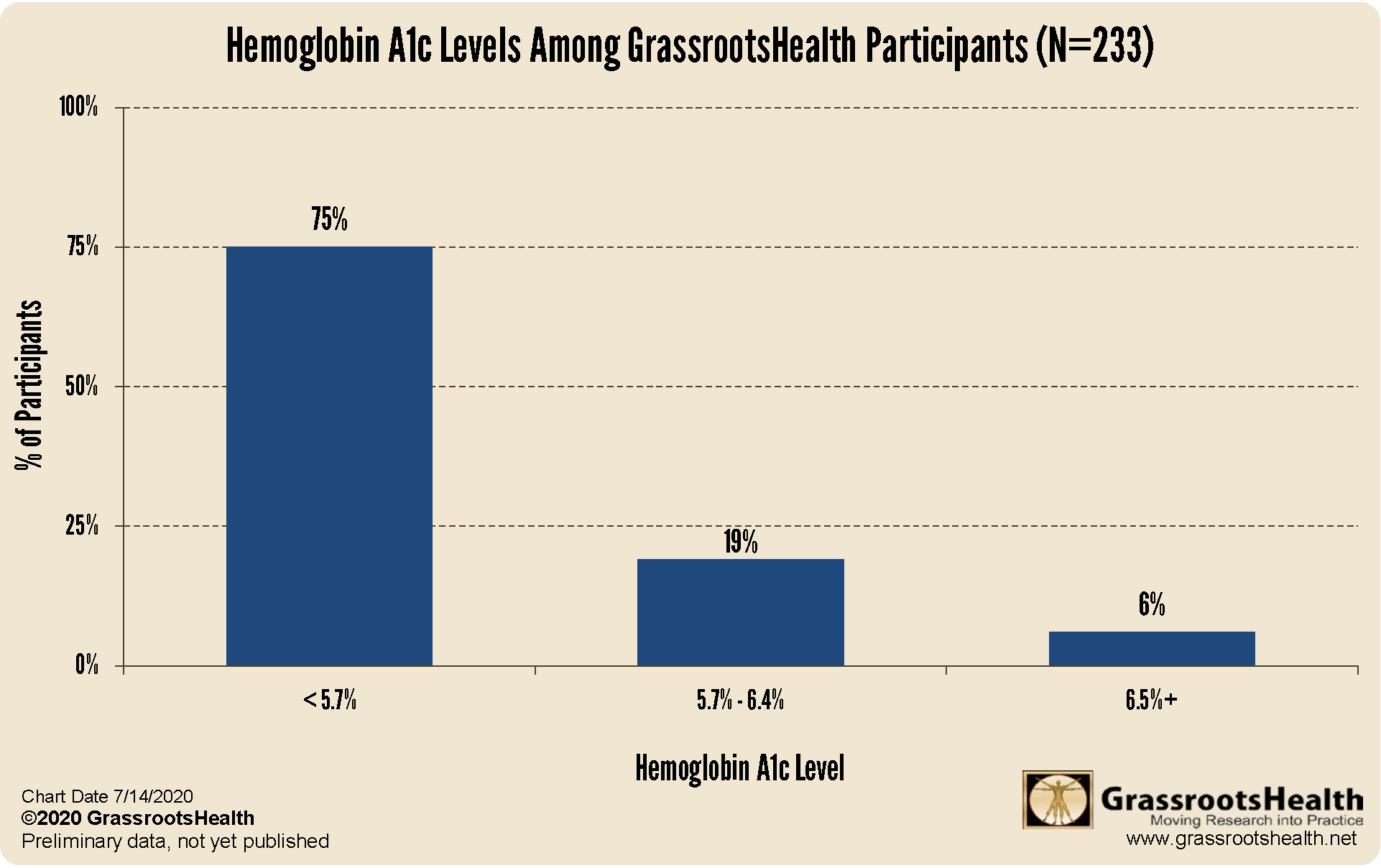Published on July 16, 2020
In the United States, diabetes affects more than 30 million people, with Type 2 diabetes accounting for 90-95% of cases. Additionally, more than a third of US adults (84 million) have prediabetes. Many people with diabetes don’t even know they have it (25% of those with diabetes and 90% of those with prediabetes)! Since Type 2 diabetes is a known modifiable risk factor for COVID-19 severity and mortality, knowing your status can help your focus your health efforts on reducing your risk.
Type 2 diabetes and Hemoglobin A1c
 Type 2 diabetes is caused by too much glucose in the blood primarily due to insulin resistance, which is when the body doesn’t use insulin as well as it should. Hemoglobin A1c, or HbA1c, is the compound formed in the blood when a hemoglobin molecule in a red blood cell binds with a glucose molecule. The more glucose that enters the bloodstream, the higher the amount of hemoglobin A1c.
Type 2 diabetes is caused by too much glucose in the blood primarily due to insulin resistance, which is when the body doesn’t use insulin as well as it should. Hemoglobin A1c, or HbA1c, is the compound formed in the blood when a hemoglobin molecule in a red blood cell binds with a glucose molecule. The more glucose that enters the bloodstream, the higher the amount of hemoglobin A1c.
Measuring the percentage of hemoglobin A1c in the blood provides information about the average blood glucose levels over the prior few months. Generally levels below 5.7% are considered normal, 5.7% to 6.4% are considered prediabetic, and levels of 6.5% or higher are considered diabetic. This test can be used by a health care professional, along with other tests and a physical exam, to help diagnose type 2 diabetes and prediabetes and for diabetes management.
How can I find out my Hemoglobin A1c levels?
GrassrootsHealth offers a Hemoglobin A1c dried blood spot test. Knowing your Hemoglobin A1c levels can enable you to focus your health efforts on lifestyle changes, such as diet and exercise, which can help prevent of even reverse prediabetes. Additionally, studies have shown that increasing vitamin D and omega-3 levels can lower Hemoglobin A1c levels. Be sure to consult your practitioner if you think you are at risk for diabetes and for specific recommendations for your health.
What are the Hemoglobin A1c levels among GrassrootsHealth Participants?
Among the 233 participants who tested their Hemoglobin A1c levels, the average level was 5.2%. As you can see from the chart below, 75% of these participants have levels in the normal range, 19% have levels in the range indicating prediabetes, and 6% have levels in the range indicating diabetes. With diabetes being a top risk factor for COVID-19, this data suggests that one-quarter (25%) of participants may be at a higher risk for COVID-19 severity and mortality.
Additionally, among those who completed two or more tests, 73% of those with levels 5.7% or higher (prediabetes or diabetes) lowered their hemoglobin A1c levels after their first test.
Check on Your A1c and Inflammation Levels Today
Blood sugar imbalances and inflammation are both leading contributors to poor health and chronic disease. Testing your levels of A1c and CRP can give you a better idea of how well your body is able to regulate blood sugar and manage inflammation, and give you an opportunity to take steps to improve both. Test your levels today with the Inflammation Panel!
Are You Getting Enough Vitamin D to Help Yourself?
We’re in a time of great crisis that could be greatly affected by making sure you and everyone you know has a serum level of at least 40 ng/ml. Help us help you.
Do you know what your vitamin D level is? Be sure to test today to find out, and take steps to keep it within a target of 40-60 ng/ml or 100-150 nmol/L! Give your immune system the nutrients it needs to support a healthy you and protect yourself from unnecessary diseases.
Through GrassrootsHealth Nutrient Research Institute, you can also test your essential elements magnesium, copper, zinc and selenium, toxins such as lead, mercury and cadmium, as well as your omega-3 levels, inflammation levels and thyroid stimulating hormone (TSH) level. Find out your levels today! Log on to the test selection page (click the link below) to get your tests and see for yourself if your levels can be improved.
Make sure you track your results before and after, about every 6 months!
How can I track my nutrient intake and levels over time?
To help you track your supplement use and nutrient levels, GrassrootsHealth has created the Personal Health Nutrient Decision System called
For each specific supplement, you can track what days you take it, how much, and many other details. This will help you know your true supplemental intake and what patterns of use work for you to reach and maintain optimum nutrient levels. Check it out today!








